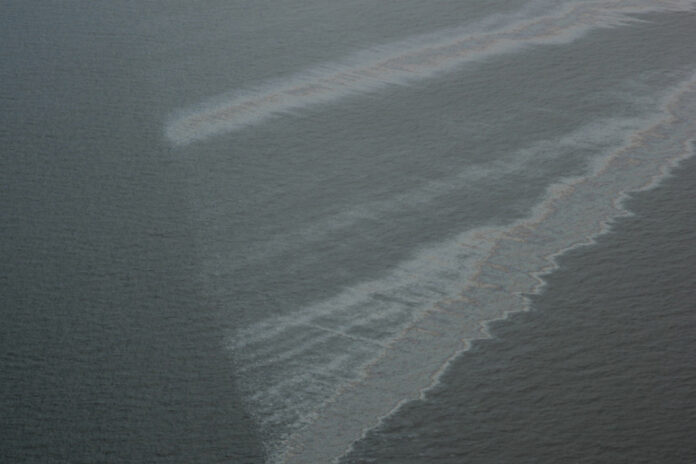Just in case you think that the oil and gas companies care or that marine shippers pay attention to their impact on ocean health, well hold that thought. They don’t!
A new study from researchers at Florida State and Nanjing Universities reveals our ocean surfaces are continuously being coated by oil slicks, city blocks in length. Remote sensing and imagery from Europe’s Sentinel satellites detected the occurrence of these repeated oil slicks from human sources and natural seeps. The human contribution outweighed the natural by nearly 10 to 1.
The oceans of our world cover 360 million square kilometres (139 million square miles). How much of their surfaces are covered by oil from maritime traffic, leaks and accidents from ocean rigs, and spills from fishers and boating enthusiasts?
The satellite imagery compiled between 2014 and 2019 shows that an area twice the size of France, that’s 1.29 million square kilometres (around 500,000 square miles) is polluted on the surface with the vast majority a result of human activity. A small percentage can be attributed to natural seeps which were the original focus of the research project.
It should be noted that the pollution recorded by the researchers doesn’t extend to the water column below the surface. If you recall the aftermath of the Deepwater Horizon spill in the Gulf of Mexico, what appeared on the surface was just a small percentage of what that accident produced. As the oil broke down to molecular size it polluted every part of the water column and blanketed the seafloor over hundreds of square kilometres.
The city-block length oil slicks revealed by this new study were found to cover 80% of the global ocean surface. The biggest slicks appeared off the Indonesian coast, in the Mediterranean, and in the South Cina Sea. Oil slicks weren’t just confined to the oceans. For example, 20% of the Caspian Sea, in Central Asia was found to be covered by oil.
Ian MacDonald, a Department of Earth Ocean and Atmospheric Science Professor at Florida State University is a co-author of the paper that was published in the journal Science. In a Florida State presser, he states, “What’s compelling about these results is just how frequently we detected these floating oil slicks, from small releases, from ships, from pipelines, from natural sources such as seeps in the ocean floor and then also from areas where industry or populations are producing runoff that contains floating oil.” And even though the surface pollution is short-lived, the amounts even when small impact the ocean food chain by first affecting plankton. And for air-breathing sea life like turtles and whales, surface contact with oil slicks remains an ongoing health threat.
Differentiating between natural occurrences and human-caused was fairly easy. Natural seeps always appeared in the same places. But the researchers found slicks on shipping routes, near pipelines, and drilling platforms, and these were in far greater numbers than anything nature was producing. Almost all were located within 160 kilometres (100 miles) of coastlines. The cause for much of these coastal oil slicks included runoff sources from land and road surfaces. Maritime shipping contributed 1.4 million square kilometres (550,000 square miles) to the total.
















